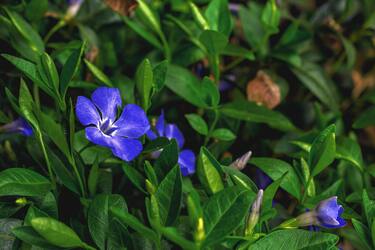Growing and caring for periwinkle

In ancient times, delicate periwinkle flowers were considered a magical amulet against evil spirits and misfortune. Today they enchant us with their pale blue or purple flowers and lush green foliage. UAportal has prepared tips for planting and caring for periwinkles.
Periwinkle has long been closely associated with folklore and folk medicine, and is revered for its healing properties, such as relieving hypertension, fever, and headaches. However, it is important to note that periwinkle is highly toxic if consumed in excess or in contact with the skin.
These shrubs bloom early, starting in late April and ending in mid-summer, with flower stalks that rise vertically, enhancing their decorative effect. After the end of the flowering season, the stems of the plant gracefully drop down.
The best time to plant periwinkle is in early spring or fall during the dormant phase. Planting in summer can also be an option, but it is advisable to choose rainy weather for successful rooting.
Periwinkle is surprisingly hardy, easily takes root along its long creeping stems, and forms a lush carpet of leaves and flowers. This allows the plant to grow in all directions in your garden, creating a mesmerizing floral canvas.
Periwinkle thrives in moderately moist, loamy soil enriched with sufficient humus. For planting, choose slightly shaded areas with diffused sunlight. However, keep in mind that excessive shade can cause the plant to shed its leaves.
Maintain sufficient distance between the seedlings, leaving 20 to 30 centimeters apart. If you want lush lawns quickly, consider planting more flowers per square meter.
Periwinkle can be grown both from seeds and by transplanting a part of an adult bush or 5-centimeter cuttings, as it takes root easily.
If you want to get the latest news about the war and events in Ukraine, subscribe to our Telegram channel!
